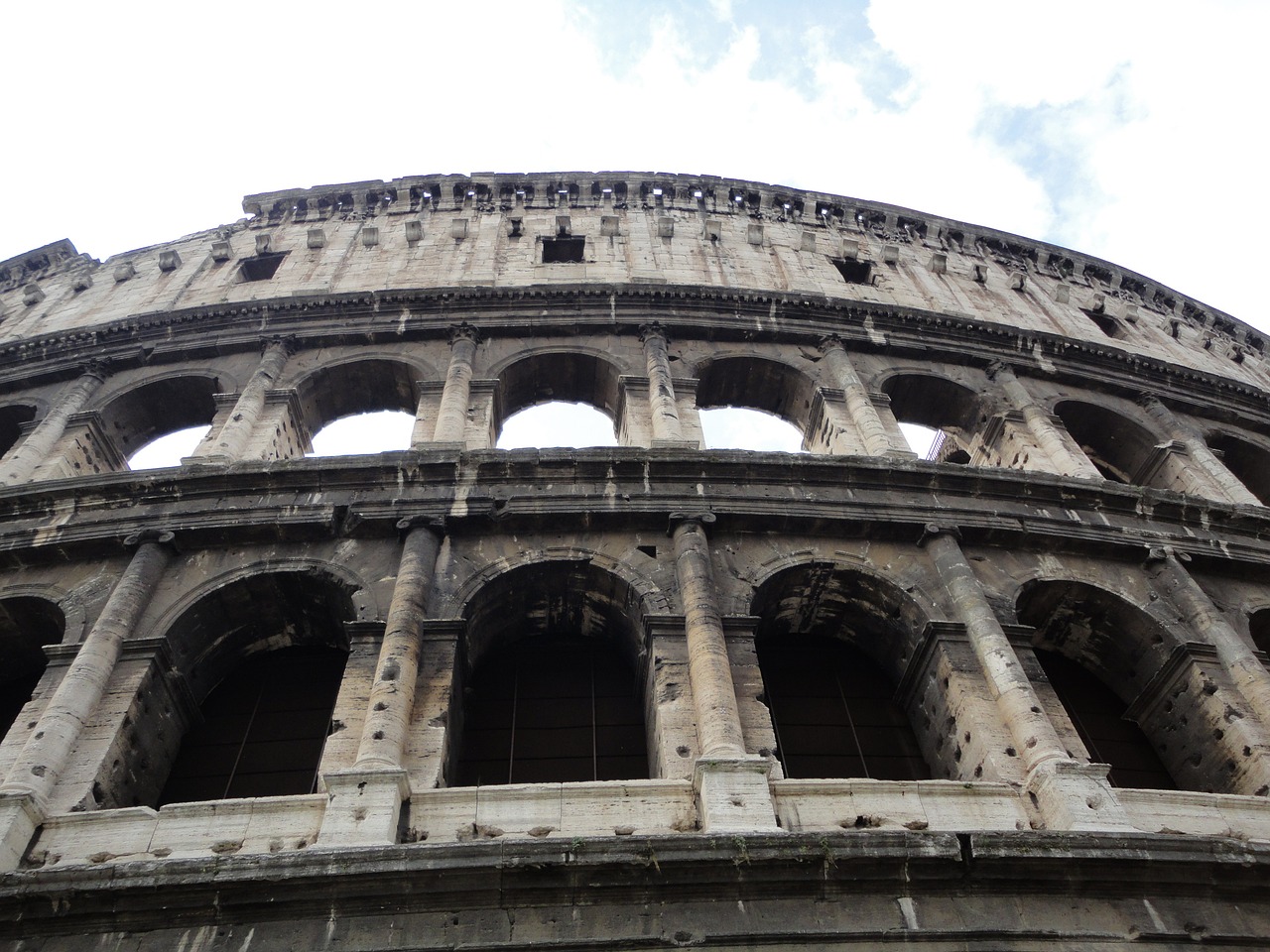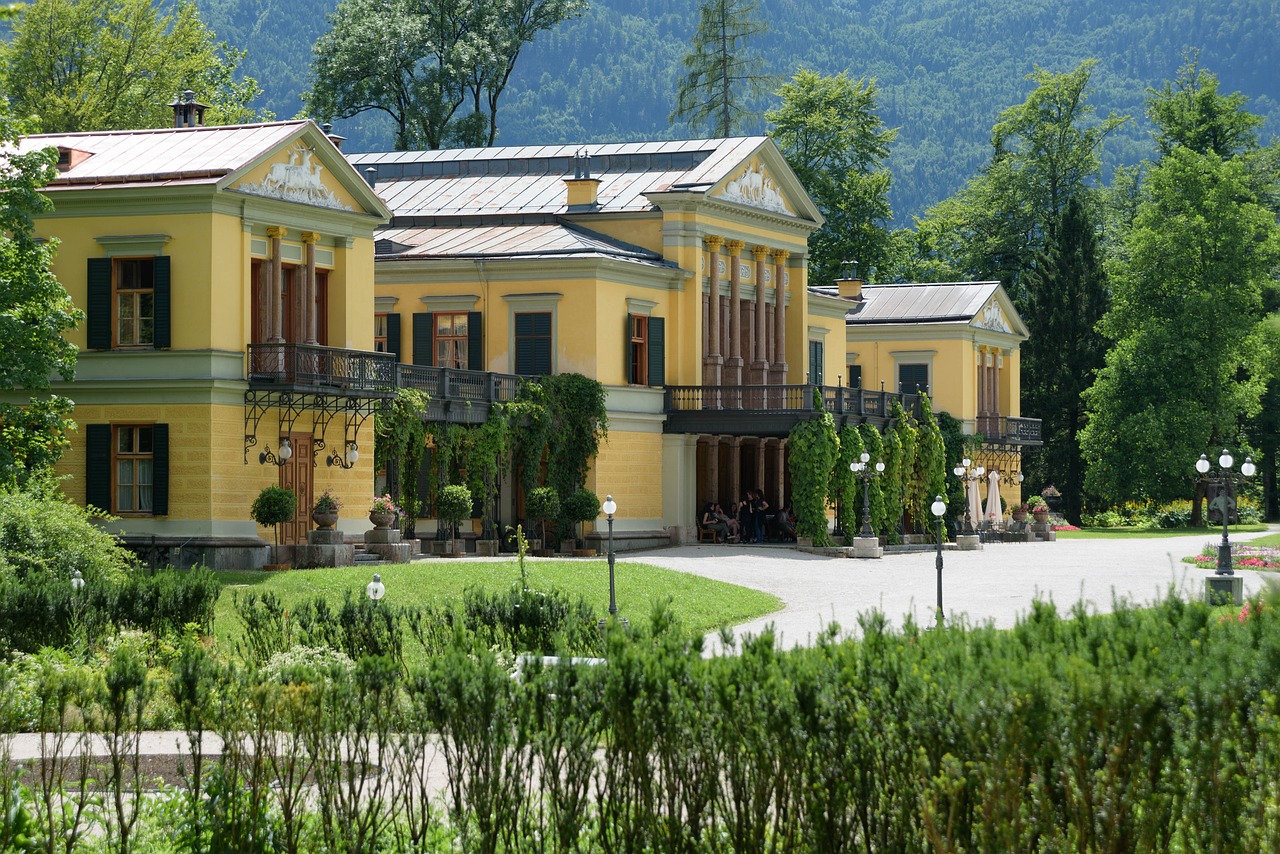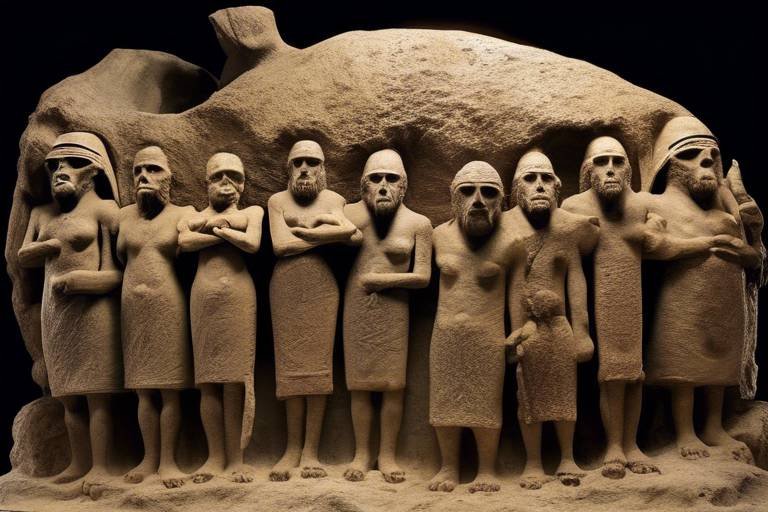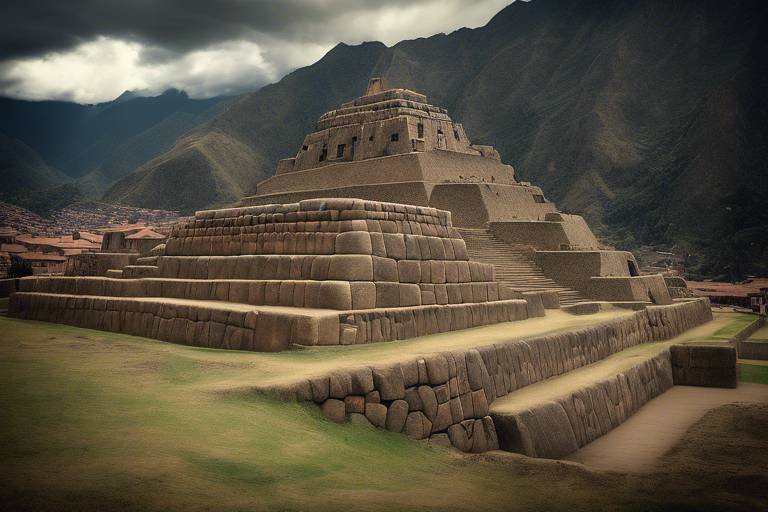The Decline of the Gupta Empire - Historical Insights
The Gupta Empire, once a beacon of prosperity and cultural flourishing in ancient India, faced a tumultuous decline that left a lasting impact on the region's history and heritage. The empire's downfall was not a sudden event but rather a culmination of various factors that gradually weakened its foundations and led to its eventual collapse.
One of the primary reasons behind the Gupta Empire's decline was the emergence of economic challenges that plagued its financial stability. Issues such as financial mismanagement, declining trade routes, and dwindling revenue sources contributed to the empire's weakening economic power.
Moreover, political instability within the empire further exacerbated its decline. Internal conflicts, weak leadership, and succession disputes created a sense of uncertainty and weakened the governance structure, making it vulnerable to external pressures and internal dissent.
The rise of regional revolts by governors and local rulers added to the empire's troubles by challenging the central authority and fracturing the once-unified Gupta rule. These uprisings further destabilized the empire and eroded its control over vast territories.
Social unrest also played a significant role in the Gupta Empire's decline. Caste conflicts, social tensions, and widespread dissatisfaction among the populace created a sense of disunity and weakened the social fabric that had once held the empire together.
Additionally, religious shifts, including the rise of new Hindu sects and the spread of Buddhism, altered the societal dynamics of the Gupta Empire, leading to further fragmentation and discord among its people.
The Gupta Empire also faced external invasions by Huns and other foreign powers, posing significant military threats that the empire struggled to repel. These invasions further weakened the empire's defenses and drained its resources, hastening its decline.
As the Gupta Empire entered its later years, a noticeable cultural decline set in, marked by a decrease in artistic and intellectual achievements that had once defined its golden age. This decline had profound implications for Indian culture and the legacy of the Gupta Empire.
Despite its decline, the Gupta Empire's legacy continues to linger in the annals of history, with its contributions to literature, science, and art enduring as a testament to its once-great influence on ancient India. The empire's impact, though diminished, remains a significant chapter in the rich tapestry of Indian history.

Economic Challenges
Exploring the factors that led to the downfall of the influential Gupta Empire in ancient India and its impact on the region's history and culture.
During its later years, the Gupta Empire faced significant economic challenges that played a crucial role in its decline. One of the primary issues was financial mismanagement, where the treasury suffered due to corruption and inefficiency. The decline in trade, both internal and external, further weakened the economic foundation of the empire. The lack of a robust financial system and the inability to address these economic woes effectively contributed to the gradual erosion of the Gupta Empire's prosperity.

Political Instability
Exploring the factors that led to the downfall of the influential Gupta Empire in ancient India and its impact on the region's history and culture.
Examining the economic issues such as financial mismanagement and declining trade that contributed to the weakening of the Gupta Empire.
Analyzing the internal conflicts, weak leadership, and succession disputes that destabilized the governance structure of the Gupta Empire.

Regional Revolts
During the decline of the Gupta Empire, one of the significant challenges that emerged was the outbreak of regional revolts across various parts of the empire. These revolts were led by regional governors and local rulers who sought to assert their independence and challenge the central authority of the Gupta rulers. The discontent among these regional leaders stemmed from a combination of factors, including dissatisfaction with the Gupta administration, economic grievances, and aspirations for greater autonomy.
The regional revolts not only posed a direct threat to the stability of the Gupta Empire but also highlighted the underlying tensions within the political and social fabric of the empire. As these revolts spread and gained momentum, they further weakened the already fragile central authority of the Guptas, leading to a breakdown in governance and control over vast territories.
Amidst the chaos of regional revolts, the Gupta rulers struggled to maintain unity and quell the uprisings effectively. The decentralized nature of the empire, with powerful regional leaders exerting influence over their respective territories, exacerbated the challenges faced by the central administration in suppressing the revolts and restoring order.
The regional revolts also reflected a broader shift in power dynamics within the Gupta Empire, with regional elites asserting their dominance and challenging the traditional hierarchical structure. This period of turmoil and unrest marked a turning point in the history of the Gupta Empire, signaling the beginning of its gradual decline and eventual fragmentation.

Social Unrest
Social unrest played a significant role in the decline of the once prosperous Gupta Empire. The societal fabric of the empire began to fray as various factors contributed to growing dissatisfaction among the populace. Caste conflicts, which had been simmering beneath the surface for years, started to escalate, leading to tensions that undermined social cohesion. The rigid caste system, which had been a cornerstone of Gupta society, became a source of division rather than unity.
Moreover, economic hardships and political instability further exacerbated social tensions. As the economic prosperity of the empire waned, disparities between different social classes became more pronounced, fueling resentment and discontent. The lack of effective leadership to address these issues only served to deepen the sense of unrest among the people.
Religious shifts also played a role in the social upheaval during the later years of the Gupta Empire. The rise of new Hindu sects and the spread of Buddhism challenged the traditional religious practices and beliefs, causing further division within the society. Religious differences added another layer of complexity to an already fragile social structure.
The dissatisfaction among the populace eventually manifested in various forms of protest and resistance against the ruling elite. Protests, demonstrations, and even sporadic violence became more common as social grievances intensified. The once harmonious social order of the Gupta Empire gave way to discord and unrest, signaling the beginning of the empire's decline.

Religious Shifts
During the decline of the Gupta Empire, significant religious shifts occurred that played a crucial role in shaping the societal fabric of ancient India. The rise of various Hindu sects, such as Shaivism and Vaishnavism, brought about a diversification of religious beliefs among the populace. This diversification led to both a sense of unity and fragmentation within the society, as different sects vied for influence and followers.
Additionally, the spread of Buddhism continued to impact the Gupta Empire, with monastic communities gaining prominence and exerting moral and ethical influence over the population. The emphasis on non-violence, compassion, and meditation offered an alternative spiritual path for many individuals disillusioned with the political and social turmoil of the time.
Moreover, the Gupta rulers themselves patronized various religious institutions and supported the construction of temples and monasteries, further entwining religious practices with the political authority of the empire. This intersection of religion and governance created a complex dynamic that influenced both the spiritual and temporal aspects of society.

External Invasions
During its decline, the Gupta Empire faced significant challenges from external invasions that posed a severe threat to its existence. The invasion by the Huns, a nomadic Central Asian tribe known for their fierce military prowess, proved to be particularly detrimental to the Gupta Empire's stability. These invasions disrupted trade routes, plundered wealth, and destabilized the regions under Gupta control.
The Huns, under the leadership of their formidable rulers, launched relentless attacks on the Gupta Empire, exploiting its weakened state due to internal conflicts and political instability. The Gupta rulers struggled to fend off these foreign incursions, leading to widespread devastation and loss of territory. The military prowess of the Huns and their strategic advantage in warfare posed a formidable challenge to the Gupta forces.
As the Gupta Empire grappled with internal strife and economic hardships, the external invasions further weakened its defenses and undermined its authority. The constant threat of foreign aggression forced the Gupta rulers to divert resources towards defense, draining the empire's resources and exacerbating its decline. The inability to effectively repel these invasions marked a significant turning point in the history of the Gupta Empire.
Despite their best efforts, the Gupta rulers struggled to contain the impact of external invasions on their empire. The military conflicts and territorial losses inflicted by foreign powers contributed to the erosion of the Gupta Empire's power and influence. The incursions by the Huns and other invading forces left a lasting mark on the political landscape of ancient India, reshaping the dynamics of power in the region.

Cultural Decline
The of the Gupta Empire marked a significant shift in the artistic and intellectual landscape of ancient India. As the empire faced internal strife and external pressures, the once-thriving cultural scene began to wane, leaving a void in the vibrant tapestry of Indian heritage. The decline in artistic patronage and intellectual pursuits mirrored the broader challenges faced by the empire, signaling a decline in the flourishing cultural renaissance that characterized the earlier years of Gupta rule.
One of the key aspects of the cultural decline was the diminishing support for artistic endeavors and intellectual pursuits. The grand architectural projects and intricate sculptures that adorned Gupta temples and palaces began to fade, reflecting a society grappling with political instability and economic hardships. The decline in artistic output not only affected the visual landscape but also had a profound impact on the cultural identity of the Gupta Empire.
Furthermore, the intellectual achievements that once defined the Gupta era saw a gradual decline during the later years of the empire. The vibrant scholarly community that had produced groundbreaking works in mathematics, astronomy, and literature faced challenges amidst the tumultuous political climate. As patronage dwindled and resources became scarce, the intellectual pursuits that had flourished under the Gupta Empire began to stagnate, leading to a loss of the intellectual vibrancy that had characterized the golden age of Indian thought.
The cultural decline of the Gupta Empire also had implications for the preservation of artistic traditions and knowledge systems. With the waning support for artistic endeavors and intellectual pursuits, many of the intricate techniques and profound insights developed during the Gupta era faced the risk of being lost to future generations. The decline in cultural patronage not only impacted the contemporary artistic scene but also had long-term repercussions for the transmission of knowledge and artistic techniques in ancient India.
In conclusion, the cultural decline of the Gupta Empire marked a significant turning point in the history of ancient India, signaling the end of an era of artistic and intellectual flourishing. While the decline had profound implications for the cultural landscape of the region, the legacy of the Gupta Empire continued to resonate in the artistic and intellectual traditions that endured despite the challenges faced during the later years of the empire.

Lingering Legacy
Exploring the factors that led to the downfall of the influential Gupta Empire in ancient India and its impact on the region's history and culture.
Examining the economic issues such as financial mismanagement and declining trade that contributed to the weakening of the Gupta Empire.
Analyzing the internal conflicts, weak leadership, and succession disputes that destabilized the governance structure of the Gupta Empire.
Discussing the uprisings by regional governors and local rulers that challenged the central authority of the Gupta Empire.
Exploring the social tensions, caste conflicts, and dissatisfaction among the populace that eroded the stability of the Gupta Empire.
Investigating the impact of religious changes, such as the rise of Hindu sects and the spread of Buddhism, on the Gupta Empire's societal fabric.
Examining the invasions by Huns and other foreign powers that posed significant military threats to the Gupta Empire.
Exploring the decline in artistic and intellectual achievements during the later years of the Gupta Empire and its implications for Indian culture.
Reflecting on the lasting influence of the Gupta Empire despite its decline, including its contributions to literature, science, and art in ancient India.
Frequently Asked Questions
- What were the main economic challenges faced by the Gupta Empire?
The Gupta Empire encountered economic difficulties due to financial mismanagement, a decline in trade, and revenue issues. These challenges weakened the empire's financial foundation and contributed to its eventual decline.
- How did political instability affect the governance of the Gupta Empire?
Political instability within the Gupta Empire stemmed from internal conflicts, weak leadership, and succession disputes. These factors disrupted the governance structure, leading to a lack of centralized authority and administrative coherence.
- What role did regional revolts play in the downfall of the Gupta Empire?
Regional revolts by governors and local rulers posed a significant challenge to the central authority of the Gupta Empire. These uprisings undermined the empire's control over its territories and further weakened its power.
- How did social unrest contribute to the destabilization of the Gupta Empire?
Social unrest in the form of caste conflicts, dissatisfaction among the populace, and overall societal tensions eroded the stability of the Gupta Empire. These internal divisions weakened the empire from within.
- What impact did external invasions have on the Gupta Empire?
The invasions by Huns and other foreign powers posed significant military threats to the Gupta Empire. These external attacks further weakened the empire's defenses and territorial integrity.
- How did cultural decline affect the later years of the Gupta Empire?
The decline in artistic and intellectual achievements during the later years of the Gupta Empire signified a cultural regression. This decline had implications for the empire's overall societal vibrancy and intellectual pursuits.
- What is the lingering legacy of the Gupta Empire despite its decline?
Despite its decline, the Gupta Empire left a lasting influence on Indian history and culture. Its contributions to literature, science, and art continue to resonate in ancient India's cultural landscape.



















